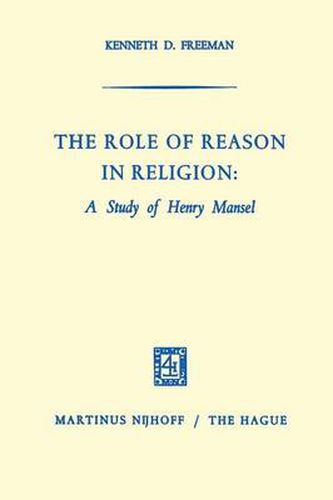Readings Newsletter
Become a Readings Member to make your shopping experience even easier.
Sign in or sign up for free!
You’re not far away from qualifying for FREE standard shipping within Australia
You’ve qualified for FREE standard shipping within Australia
The cart is loading…






This title is printed to order. This book may have been self-published. If so, we cannot guarantee the quality of the content. In the main most books will have gone through the editing process however some may not. We therefore suggest that you be aware of this before ordering this book. If in doubt check either the author or publisher’s details as we are unable to accept any returns unless they are faulty. Please contact us if you have any questions.
Henry Longueville Mansel published his Bampton Lectures in 1858, twenty seven years after Hegel’s death and twelve years before the publication of Ritschl’s Rechtfertigung und Versoehnung. The timing is significant. As a sweeping critique of liberalism, frequently symbolized by the work of Hegel, the lectures react to the slow but inexorable permeation of English religious thought by German ways of thinking. By 1858, the process was sufficiently widespread that Mansel felt justified in devoting the principal portion of his work to the attack. Ritschl marks the effective end of Hegel’s direct influence on theology and a return to a more Kantian mode of thinking. His gambit had already been made, for Mansel is in many ways a more cautious version of Ritschl. Mansel, however, wrote in English and had the misfortune to say what he did at the beginning of a movement so strong that it allowed no quali fication. Thus Mansel’s thought was rarely accepted. He was certainly not ignored, at least at the time. The lectures, entitled The Limits of Religious Thought, were an immediate sensation. They were quickly reprinted both on the Continent and in America and went through two editions in 1858, two more in 1859, and a fifth in 1867. For a period they became almost a textbook in the schools of the University.
1 Few leading divines of the day were silent and fewer yet were neutral.
$9.00 standard shipping within Australia
FREE standard shipping within Australia for orders over $100.00
Express & International shipping calculated at checkout
This title is printed to order. This book may have been self-published. If so, we cannot guarantee the quality of the content. In the main most books will have gone through the editing process however some may not. We therefore suggest that you be aware of this before ordering this book. If in doubt check either the author or publisher’s details as we are unable to accept any returns unless they are faulty. Please contact us if you have any questions.
Henry Longueville Mansel published his Bampton Lectures in 1858, twenty seven years after Hegel’s death and twelve years before the publication of Ritschl’s Rechtfertigung und Versoehnung. The timing is significant. As a sweeping critique of liberalism, frequently symbolized by the work of Hegel, the lectures react to the slow but inexorable permeation of English religious thought by German ways of thinking. By 1858, the process was sufficiently widespread that Mansel felt justified in devoting the principal portion of his work to the attack. Ritschl marks the effective end of Hegel’s direct influence on theology and a return to a more Kantian mode of thinking. His gambit had already been made, for Mansel is in many ways a more cautious version of Ritschl. Mansel, however, wrote in English and had the misfortune to say what he did at the beginning of a movement so strong that it allowed no quali fication. Thus Mansel’s thought was rarely accepted. He was certainly not ignored, at least at the time. The lectures, entitled The Limits of Religious Thought, were an immediate sensation. They were quickly reprinted both on the Continent and in America and went through two editions in 1858, two more in 1859, and a fifth in 1867. For a period they became almost a textbook in the schools of the University.
1 Few leading divines of the day were silent and fewer yet were neutral.